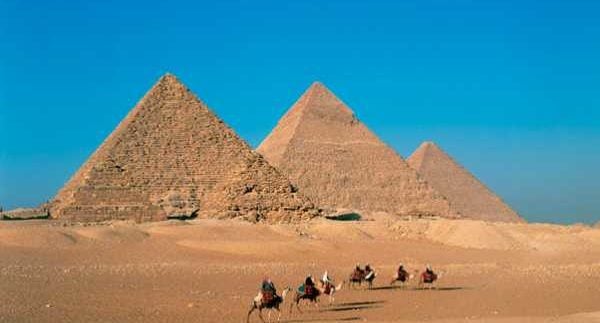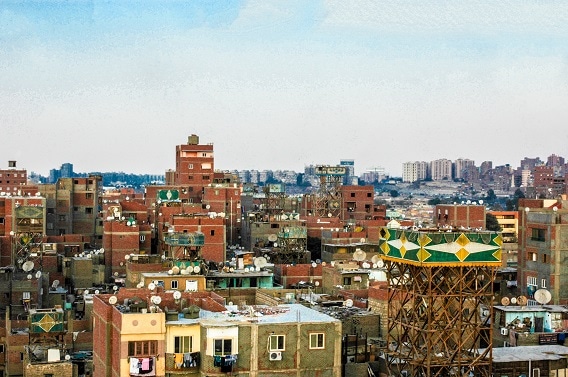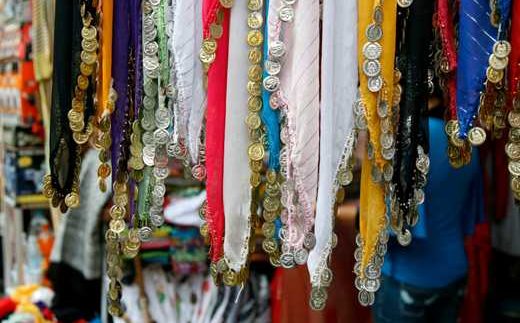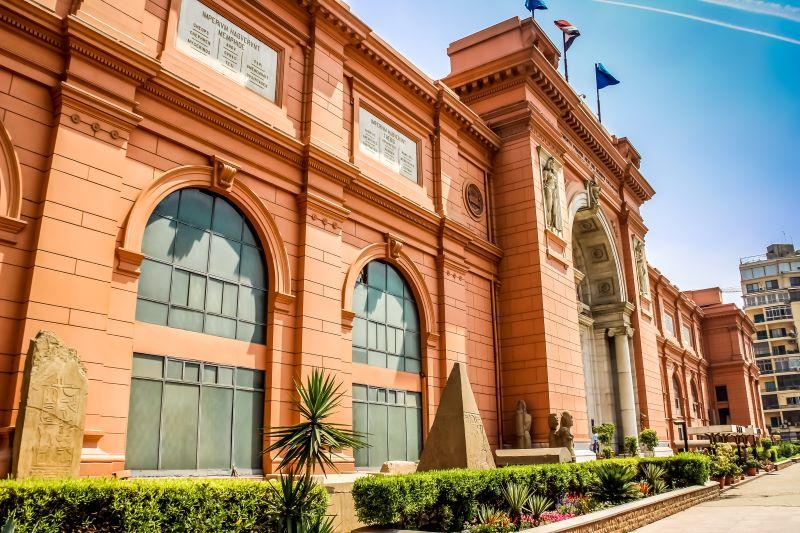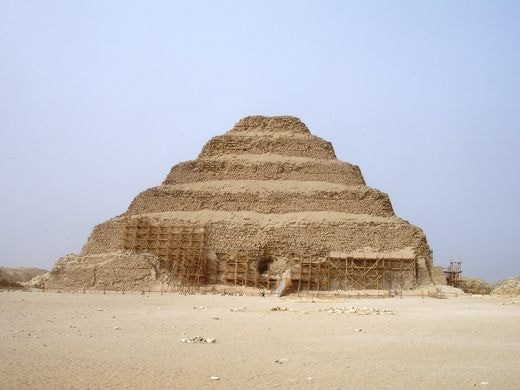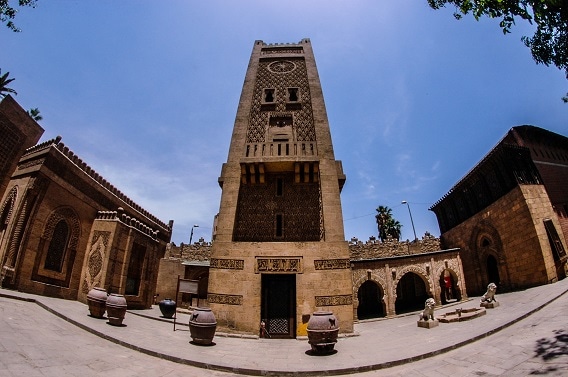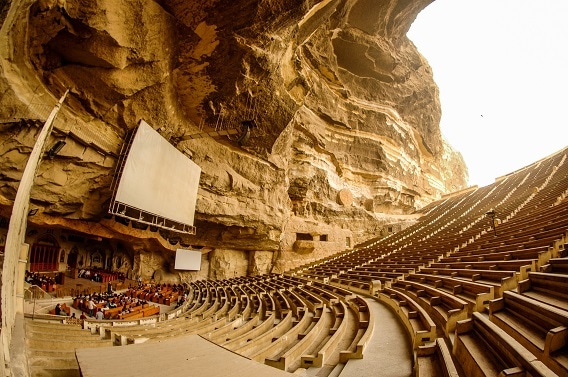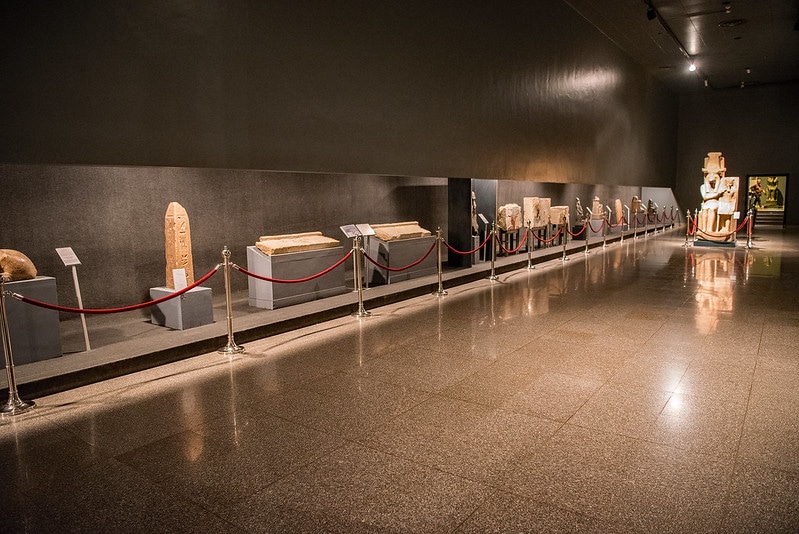ArtandCulture, Egypt
Removed from Unnamed collection
The Great Pyramids of Giza
There are three major pyramids in the pyramids necropolis in Giza. If you do not fear small spaces, take the opportunity to step inside the small cavity of the Great Pyramid (for a negotiable tip or fee) to experience the pyramid’s rather daunting descending staircase as well as the king’s and queen’s respective burial chambers.
The Great Pyramid of Khufu is believed to have been built over a twenty-year period and completed around the year 2560 B.C. For centuries, the Pyramid held the record as the tallest
man-made structure in the world. Besides the many theories and symbolism that it embodies, the Pyramid is one of the most breathtaking monuments of Ancient Egypt; take a trip to gaze at its peak and see for yourself.
Although not as magnificently large as the Great Pyramid of Khufu, the Pyramid of Khafra has a more complex interior and a large number of statues dedicated to Khafra, son of Khufu,
including the Sphinx.
The smallest of the three, the Pyramid of Menkara rarely gets the same attention as its two larger neighbours; as it lacks the size of Khufu and the Sphinx of Khafra. Menkara’s one advantage may be its material: the two predecessors used limestone, whereas Menkara used the more valuable and pricier granite in his burial chambers. https://www.cairo360.com/article/sights-travel/the-great-pyramids-of-giza-egypts-seventh-wonder-of-the-ancient-world/
Map
Removed from Unnamed collection
City of the Dead
Even Cairo, a bustling capital city of 21 million or so people, has its secrets and obscurities, not least the City of the Dead. Located below Mokattam Hills in the south east of the city, the area is essentially a necropolis; but over the centuries it has evolved into a living, breathing organism of its own that has managed to reach a certain degree of self-sufficiency. Though considered a slum – and it’d be hard to argue that – it also stands as one monument to Cairo’s colourful history.
Running along the city from north to south, the strip is around 6.4km long.
The City of the Dead dates back to the Muslim conquest of Egypt in 642 AD, when Amr Ibn Al ‘as established a family graveyard at the foot of Mokattam. Many of the residents are said to have moved there to be close to deceased relatives.
It has been something of a touristic site for centuries, with the likes of Moroccan scholar, Ibn Batuta –widely considered to be one of the greatest travelers in history – having visited and written about it. https://www.cairo360.com/article/sights-travel/in-photos-the-eerie-beauty-of-the-city-of-the-dead/
Map
Removed from Unnamed collection
Khan El Khalili
There’s absolutely nothing in Cairo like exploring the enormous shopping labyrinth of Khan El Khalili, the city’s largest souk that has preserved much of its original structure since its days as a famous medieval bazaar. Tourists and Egyptians alike arrive at this densely populated maze of streets and alleyways to find all sorts of gifts, including Egyptian antiques, fine handmade crafts, shishas and spices. https://www.cairo360.com/article/sights-travel/cairo-guide-shopping-in-khan-el-khalili/
Map
Removed from Unnamed collection
The Egyptian Museum
It may not be the oldest museum exhibiting Egyptian antiquities, but the Egyptian Museum holds the most: over 150,000 pieces are on display, with an incredible 30,000 more stocked away.
After an initial ID check at the Egyptian Museum’s entrance just off of Tahrir Square, there is a bag check at the main gates. Once you have acquired your ticket, there is yet another queue for ticket checks, before you enter through the museum doors, upon which you are subjected to another electronic sensor. Despite the museum’s website claims, you are not allowed to bring a camera in under any circumstances. Upon entering the museum, you will feel like a rogue archaeologist that has stumbled on a tomb of treasures.
You are immediately confronted by three routes. Taking a left will start you off on the chronological route through Egyptian history. Once you’ve figured out the slightly confusing numbering, room fourteen is a secret little pleasure and a must-see. Guarded by statues on either side of its entrance, the room is built like a temple. Steles are used to cover the walls, as a huge, inscribed pillar seems to hold up the ceiling of the museum itself. https://www.cairo360.com/article/arts-culture/the-egyptian-museum-an-insiders-guide/
Map
Removed from Unnamed collection
Pyramid of Djoser
Built as a tomb for the pharaoh Djoser (or Zoser), the Djoser Pyramid was constructed between 2630 BC and 2611 BC in Saqqara, Egypt. Although it is considered the world’s oldest intact large-scale stone monument, the ancient structure is often overshadowed by Egypt’s most famous pyramids.
The Djoser Pyramid stands 197 feet high and was built using 11.6 million cubic feet of stone and clay. Imhotep—a doctor, priest, and sculptor, among other titles and talents—is widely attributed as the pyramid’s architect. Initially, the structure was designed as a traditional, flat-roofed tomb called a mastaba, but Djoser wanted something bigger, something grander.
The pyramid was part of a larger 40-acre complex containing a courtyard, temples, and chapels, all enclosed inside a 30-foot wall. The entrance to the complex, as well as 13 fake doors, is built into the wall. The complex also includes a number of building facades, all of which served ritual purposes.
The pharaoh’s burial chambers are located deep within the pyramid, along with those of his 11 daughters. The burial chamber is part of the pyramid’s winding, maze-like series of tunnels, which researchers think may have been designed to prevent theft (although the pyramid was eventually looted). https://www.atlasobscura.com/places/pyramid-of-djoser
Map
Removed from Unnamed collection
The Mosque of Muhammad Ali
Located on Rhoda Island in Cairo’s Manial district, the Prince Mohammed Ali Palace is unlike any historical site in the capital. Built by the uncle of King Farouk, Prince Mohammed Ali Tewfik, between 1899 and 1929, what makes the palace stand out – even next to anything you’ll find in Old Cairo, which sits a stone’s throw away across a branch of the Nile – is its unique fusion of Ottoman, Persian, art nouveau and late baroque inspirations.
Divided into five distinctly conceived and designed buildings which sit in the middle of a stunning Persian garden, the palace was as much a home to Mohammed Ali’s grand collection of art, furniture, clothing and medieval manuscripts as it was for him. Lending itself to a museum blueprint, the palace was handed over to the Supreme Council of Antiquities – a former branch of the Ministry of Culture – in 1955 and quickly became one of the most striking reminders of the Mohammed Ali dynasty. The palace is also home to one of the world’s most lavish collections of Oriental carpets and rugs, while the walls silk embroideries and portraits of royals. https://www.cairo360.com/article/sights-travel/in-photos-the-majestic-grandeur-of-mohammed-ali-palace/
Map
Removed from Unnamed collection
St.Samaan Church
It’s become something of a cliché – a sad one at that – but we’ve said it before and we’ll say it again: there’s much more to Egypt than Ancient Egyptian antiquities. Granted, the Zabaleen area of Mokattam receives its fare share of attention for its sheer uniqueness, but one particular feature often goes unnoticed – St. Samaan Church.
The church is named after Samaan Al Kharaz (Simon the Ranner), who, according to the tradition, performed a miracle in moving the mountain to help Abraam – Pope of the Egyptian Church – prove his faith to a Jewish grand vizier. The areas of the mountain around the church also feature a number of carvings. These carvings were done by a Polish artist in 1995 and was commissioned by the church’s founder, Samaan Ibrahim. In addition to the church itself – which can seat up to 1000 people – the monastery also include a library, children’s playground and a cafeteria. https://www.cairo360.com/article/sights-travel/in-photos-the-stunning-serenity-of-st-samaan-church/
Map
Removed from Unnamed collection
Mummification Museum
Luxor Museum of Mummification is without question a real Must-See Luxor attraction that essentially showcases the ancient and fascinating art of mummification.
The Luxor Museum of mummification is exactly what it says it is: a museum that is dedicated to the subject of mummification. Visitors arriving in Luxor can find the museum facing the Nile River on Luxor West Bank, just a short distance north of the infamous Luxor Temple.
Many visitors to the city would agree that you haven’t really experienced ancient Egypt if you haven’t visited the remarkable and incredibly interesting Luxor museum of mummification.
The museum occupies what was previously a modern visitor centre, and many visitors are surprised when they discover just how big the museum actually is. As it stands today, it covers an area of just over 2,000 square meters, and within that area, visitors will find the main artefacts room; a lecture hall, a video room and a cafeteria.
The Luxor Museum of mummification has done a spectacular job at showcasing the ancient art of Egyptian mummification, and today visitors can see a large collection of mummification related items on display, along with several mummified animals and even the mummy of Masaherta that is believed to be more than three thousand years old. https://www.egypttoursplus.com/luxor-museum-of-mummification/
Map
Removed from Unnamed collection
Luxor Museum
The Luxor Museum is nowhere near as big as the Egyptian Museum in Cairo, but it was never meant to be, choosing instead to display quality rather than quantity.
The Museum of Luxor is located more or less right in the centre of Luxor, overlooking the Luxor west bank of the Nile River. Visitors who intend to visit the museum in shouldn’t expect to see anything along the lines of the Egyptian Museum in Cairo because the two places are quite literally worlds apart.
While the Museum of Egyptian Antiquities in Cairo is host to the world’s largest collection of Egyptian antiquities, Luxor Museum only has a relatively small collection, but it’s definitely worth visiting. When the museum was originally opened in 1975 there were no plans to house a massive collection of artefacts. Instead, the museum has a sort of “quality before quantity” policy. https://www.egypttoursplus.com/luxor-museum/
Map
Removed from Unnamed collection
Sand City Hurghada
One and only Open air and Sand Sculptures Museum in Africa and Middle East, Sand City Hurghada, made of 42 sculptures and 17 relief by artist from different countries who left a peace of hart and soul in their work. http://sandcity-egypt.com/aboutus
Map

